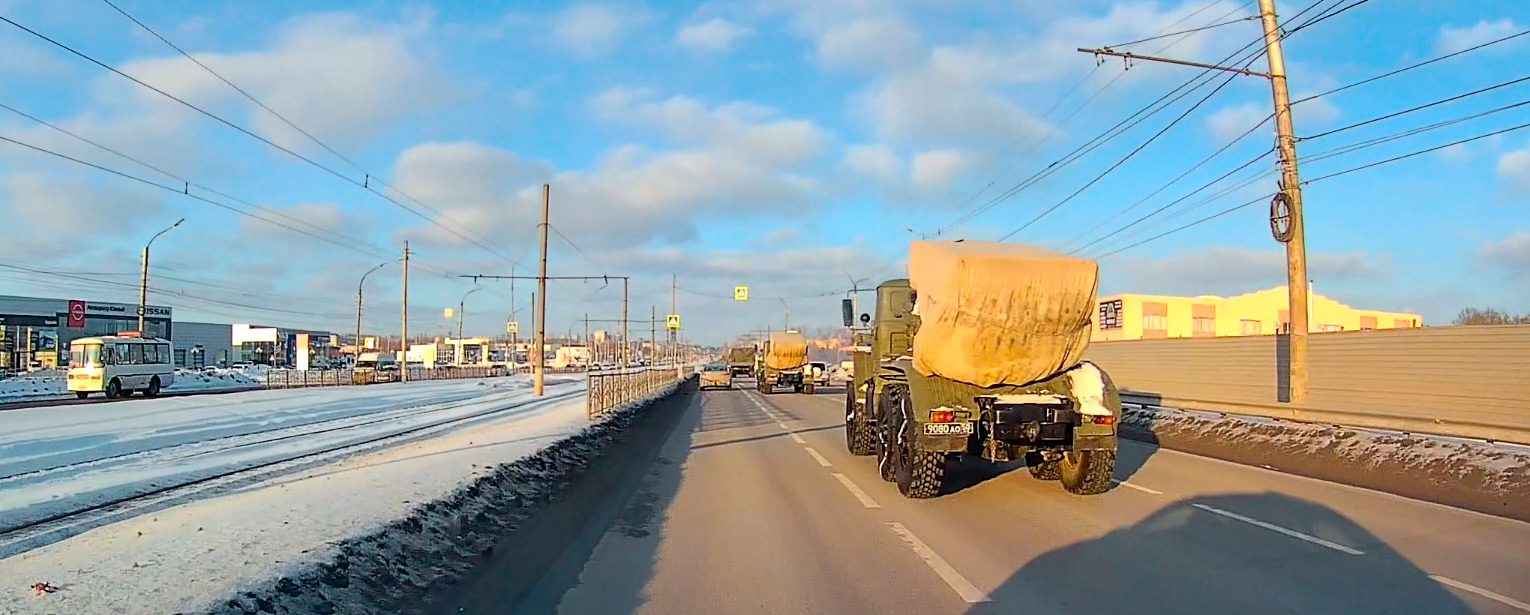Читать этот пост на русском
It has been almost a month and a half since our latest review of the concentration of Russian forces near the Ukrainian borders and in Crimea. Since then, the buildup has been ongoing at a record pace, even despite the events in Kazakhstan. The buildup includes not only Ground forces, but also the Air and Space Forces, the Navy and National Guard troops. Our research leads us to believe that the preparations to a large-scale operations are nearly complete or will be complete within a few days.
The following review cannot represent full or completely up-to-date information because of the limitations imposed by working with open sources. We are also constantly receiving new information which we may fail to fully incorporate into this article. What follows is the fullest possible picture that our team is aware of as of the evening of February 13.
Belarus Axis
Since early January, we have observed transfers of troops and personnel from the Eastern military district. Later, based on comments left by the soldiers themselves and their relatives, we learned that they were going to Belarus, where they were told they would stay for months. They were subsequently joined by various airborne units, such as elements of the 98th Airborne Division.
The soldiers from the Eastern Military District did arrive to Belarus, where the "Allied Resolve — 2022" exercise was announced. A significant part of the Russian forces dispersed over training grounds previously announced as part of the exercises, yet many units camped in the south of Gomel region, some of them several kilometers from the Ukrainian border north of Kyiv. The Belarusian Ministry of Defense explained their presence as part of the same exercise, where they would work on such training tasks as repulsing enemy air attacks.
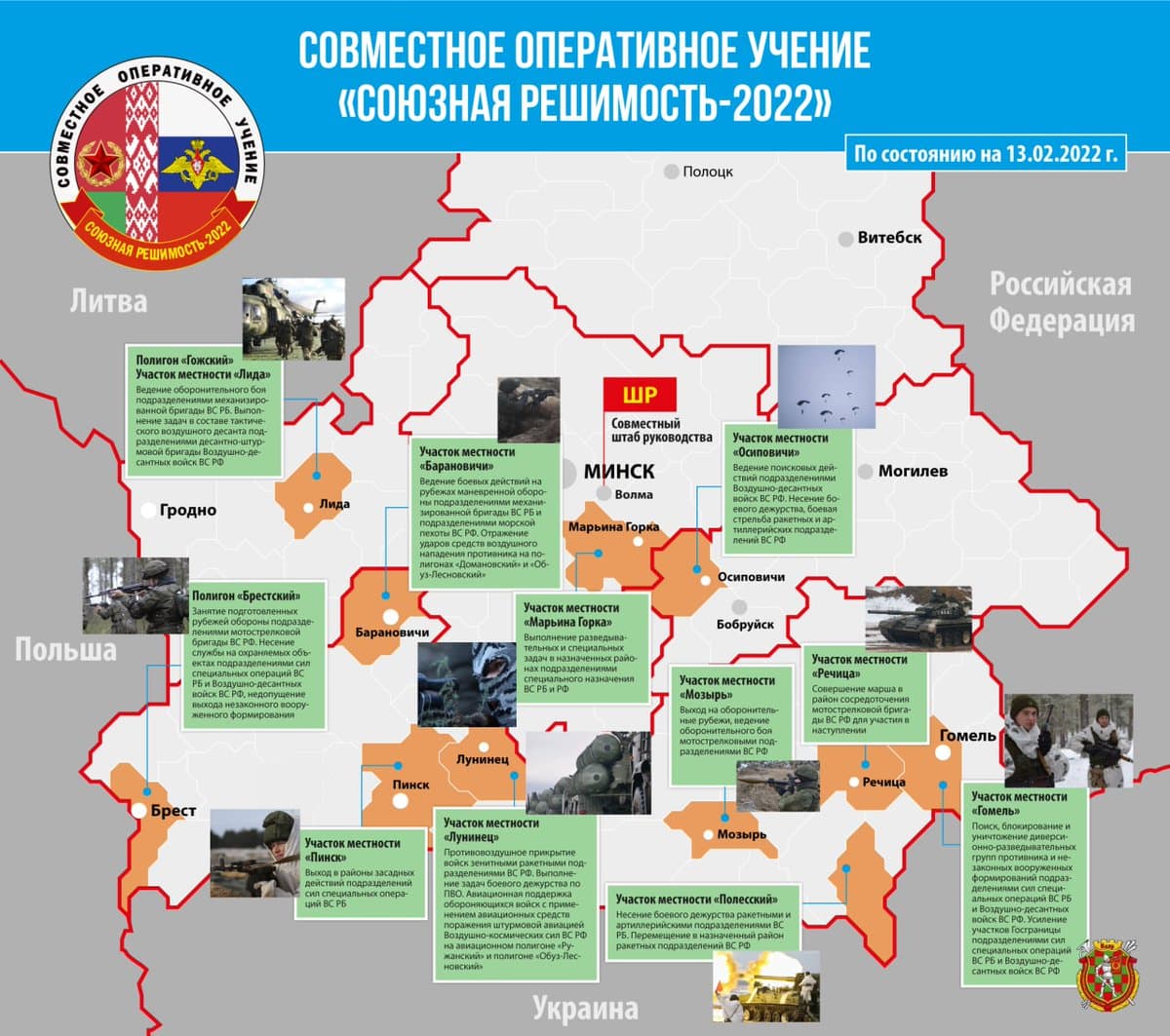
The presence of Russian forces north of Kyiv can also be seen on satellite imagery, for example near Rechitsa and Zyabrovka airfield. The latter area also saw the presence of Russian airborne vehicles, which we believe to be one of the signs of readiness for offensive operations. During the past few days, Motolko.help activists have noted movements of Russian military convoys in the area, which can be explained both by exercise and by moving to final staging areas for an offensive, possibly towards Kyiv.

Bryansk Axis
Since late last year, we and other researchers have noted transfers of Russian troops to Unecha, Klintsy and Klimovo in southern Bryansk region near the Ukrainian border north of the city of Chernihiv. Researcher Konrad Muzyka has suggested that the 90th Tank Division from the Central Military District took positions there. Recently we spotted a transfer of the 41st Combined Arms Army vehicles to the same area. Those vehicles were brought from Siberia to European Russia back in April last year. Even before the latest transfer, we have seen some signs of the Army's personnel also being transferred (such as wives writing on social media about their soldier husbands going on lengthy "business trips").
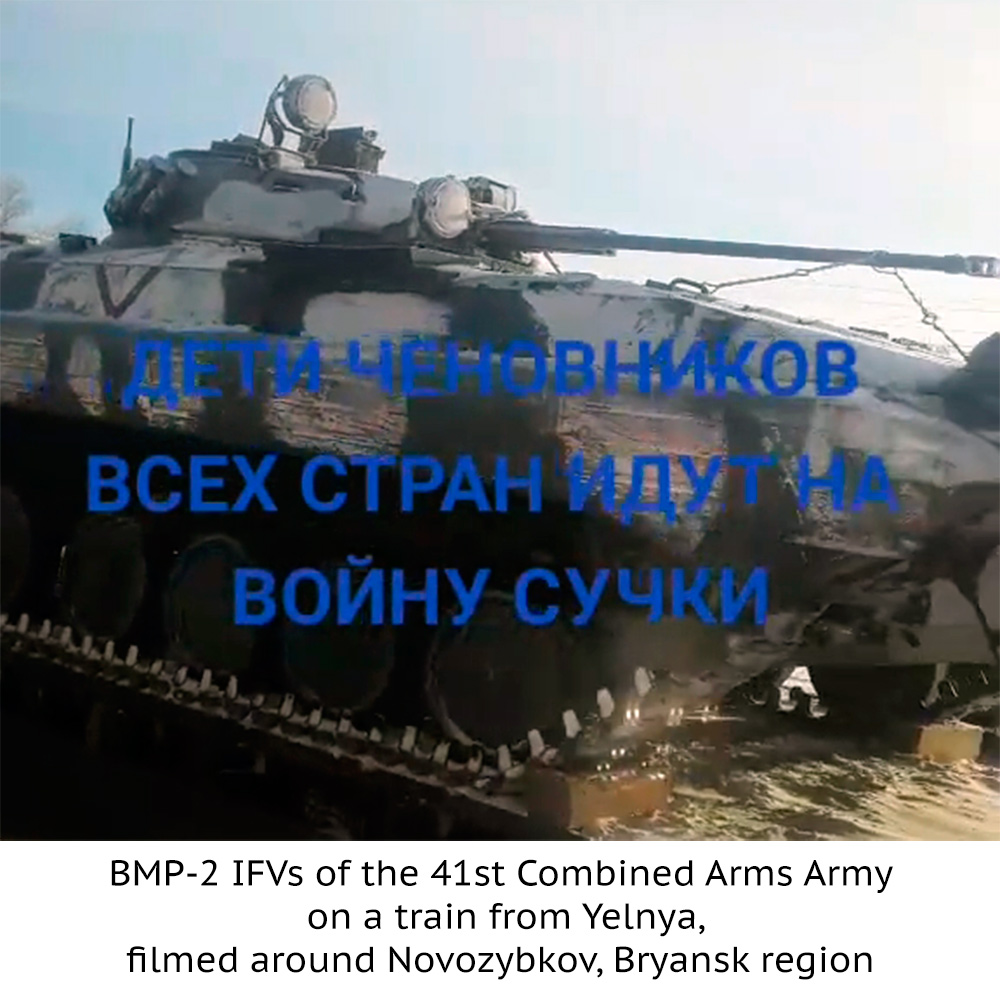
Geolocation of videos from social media and satellite imagery also points to vehicle transfers, for example, to Unecha (57 km from the Ukrainian border):
This equipment at Unecha Railway Station - Bryansk Oblast, was still parked there on January 2nd, but has since been moved elsewhere.
— The Lookout (@The_Lookout_N) January 7, 2022
The parking area is empty on today's Sentinel-2 pass, at 0905z. https://t.co/UtNK5hYc5c pic.twitter.com/mjORog89Ve
The Russian Ministry of Defense never commented on the troops concentrations in southwestern Bryansk region (as well as in other areas in Russia and Crimea, described below). In case of a full-scale invasion, these forces could advance south towards Chernihiv (and the HQ of the Operational Command "North" of Ukraine's Ground Forces) and then potentially towards Kyiv.
Kursk Axis
The first signs of Russian troop transfers to Kursk region were first observed late last year, when it likely saw the arrival of elements of the 138th Motorized Rifle Brigade of the 6th Combined Arms Army based in the area around St Petersburg. Then they camped at Postoyalye Dvory training ground east of Kursk. Railcar tracking data suggests that it was there where several trains carried the vehicles of other 6th Army units (such as the 9th Guards Artillery Brigade) as well as the 200th Motorized Rifle Brigade from the "Northern Fleet" Joint Strategic Command based in the Arctic.
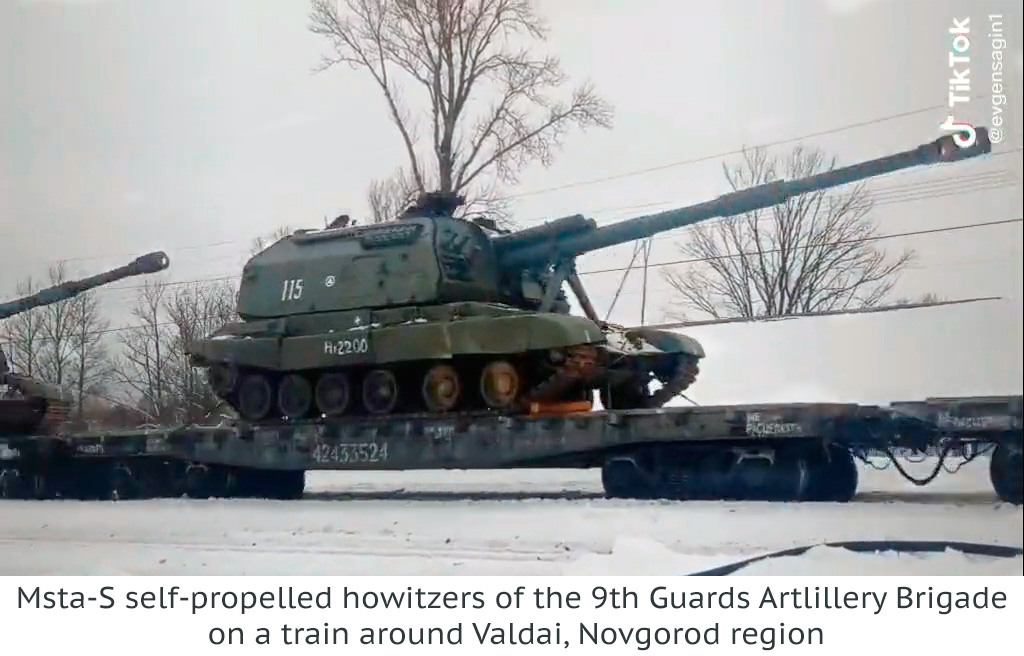
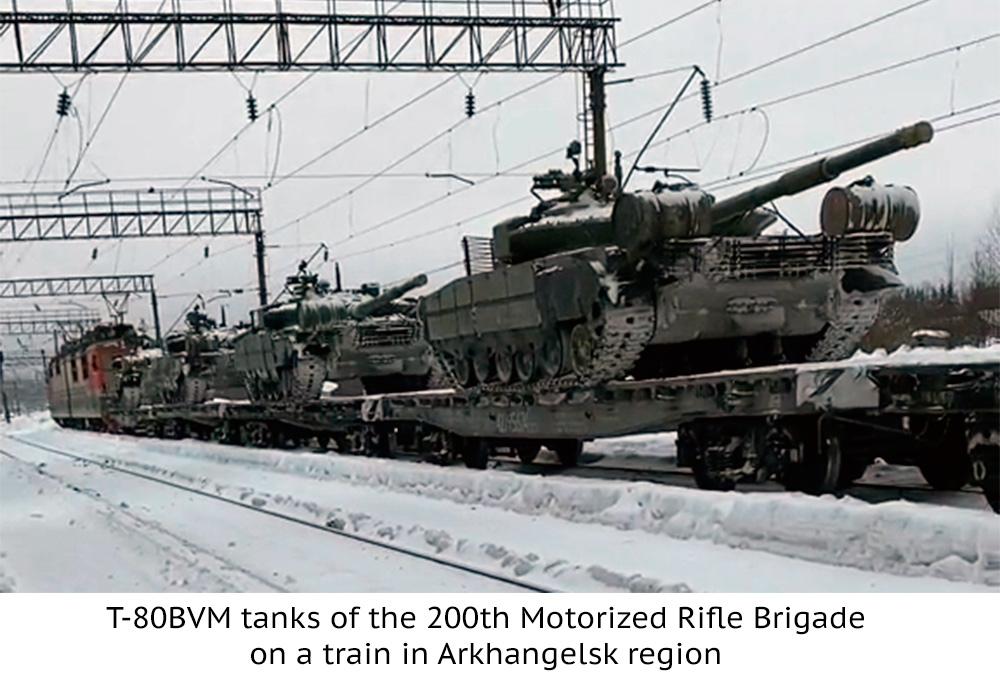
The buildup at the Postoyalye Dvory training ground can be seen in satellite imagery and in recent videos from the area. Meanwhile, at least part of the vehicles are in fact leaving the training ground — for example, researchers tracked a convoy of Msta-S self-propelled howitzers transported from Postoyalye Dvory to Ivnya, Belgorod region to the south.
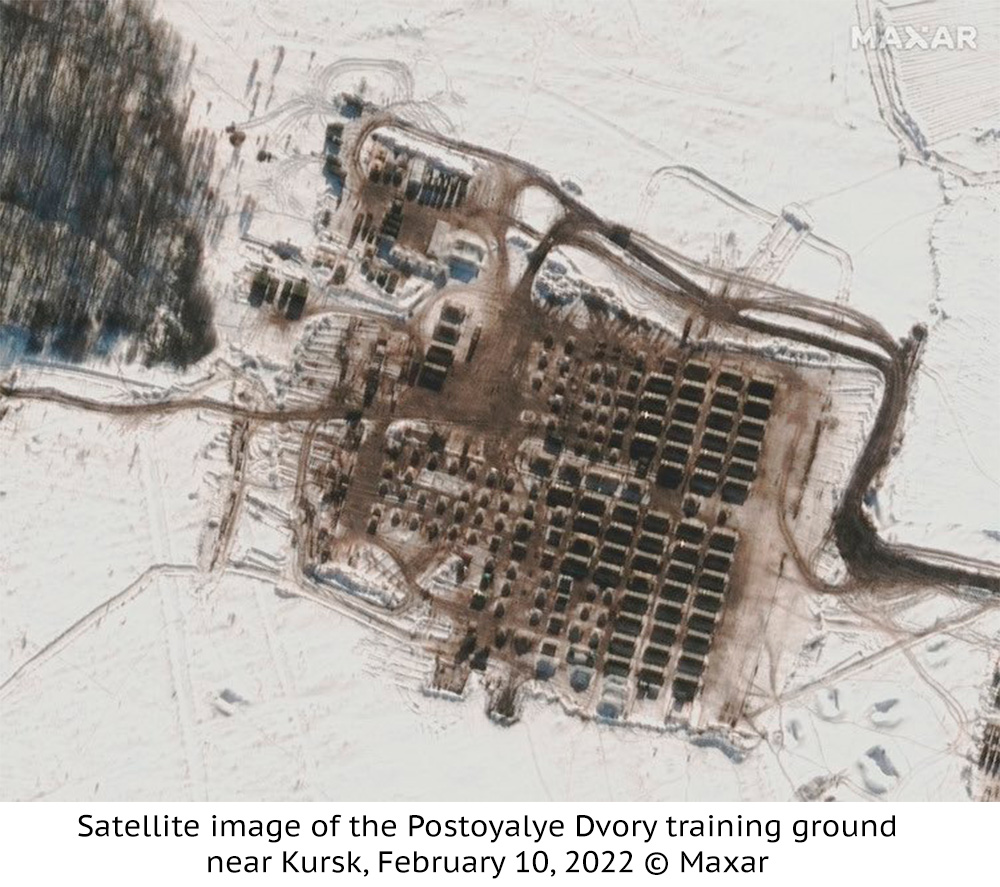
Other forces have also been arriving to Kursk region recently. We've long seen elements of the 2nd Guards Combined Arms Army on the move from their bases near the Volga and close to the Kazakhstani border. Railcar tracking data suggests that at least two trains went from the bases of the 21st Separate Motorized Rifle Brigade and the 297th Anti-Air Missile Brigade to Korenevo station, Kursk region. Videos from that station feature Buk missile launchers (likely from the 297th brigade) and other vehicles. We believe that the vehicles then continue west towards Rylsk and then towards the border near the town of Glukhov in Ukraine. In case of a large-scale operation, this group could advance southwest towards Kyiv along the M02 highway.
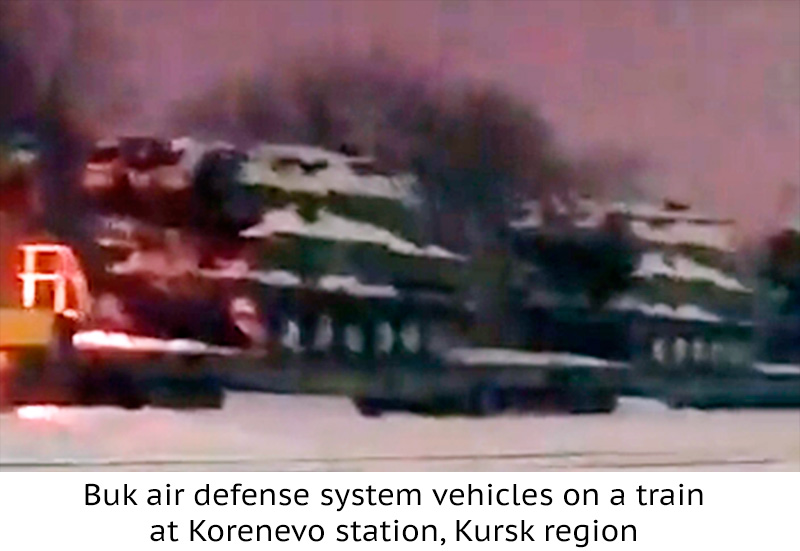
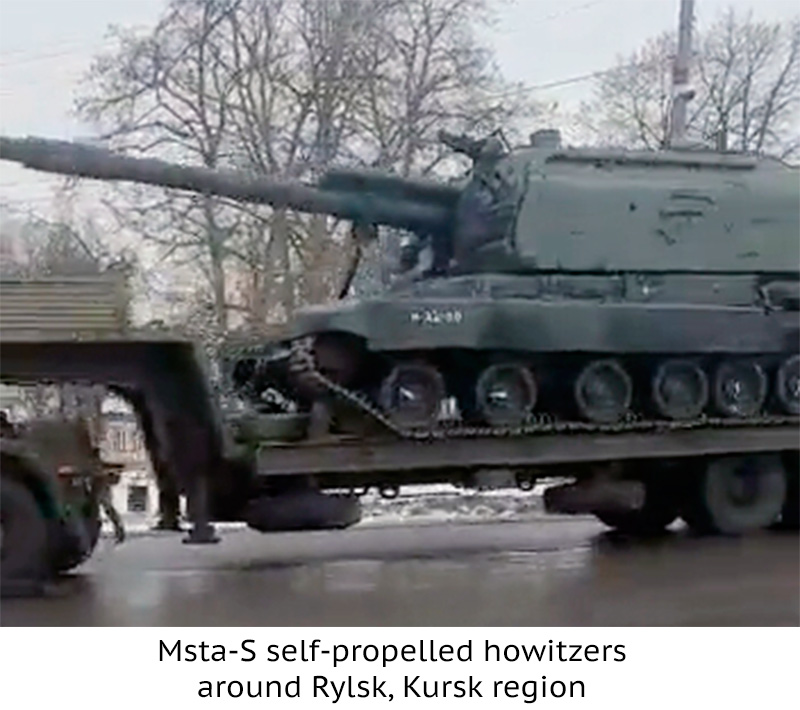
Apart from that, researchers have discovered several videos filmed near Sudzha, Kursk region (under 10 km from the Ukrainian border and under 40 km from the Ukrainian city of Sumy). However, we have difficulties determining the specific units, final staging grounds or possible tasks set for this group. They could theoretically proceed to one of the other staging areas along the border.
Belgorod Axis
As we recently reported, 1st Guards Tank Army vehicles were being transferred towards Belgorod and Vesyolaya Lopan (under 10 km from Ukraine, under 50 km from the large city of Kharkiv) both from the Pogonovo training ground near Voronezh where they had stayed for the past several months and also from their permanent bases in Smolensk and Moscow regions. Vesyolaya Lopan also saw the transfer of several 2S7 Pion/Malka heavy self-propelled guns and at least one 2S4 Tulpan self-propelled mortar from the 45th High Power Artillery Brigade of the Western military district. For context, the Pion guns' firing range would allow them to shell Kharkiv without crossing the Ukrainian border. In case of a large offensive, the forces of the 1st Guards Tank Army supported by heavy artillery may attempt to cut off or assault Kharkiv.
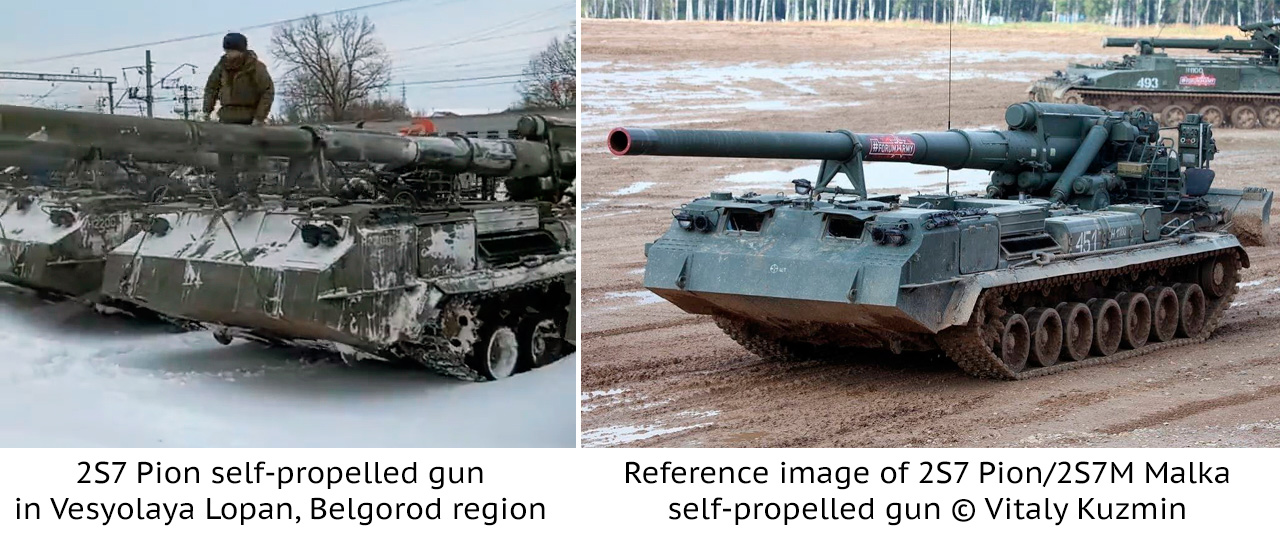
Yet another staging area in Belgorod region could be around Krasnaya Yaruga near Ukraine's Sumy region, where a large convoy of trucks and APCs was spotted recently. This could also be the final staging are for the Msta-S self-propelled howitzers and other vehicles spotted in Ivnya. It is hard to assess the scale of the buildup in this area, but in case of a large-scale operation these forces could advance towards Sumy together with the possible grouping in Sudzha, Kursk region.
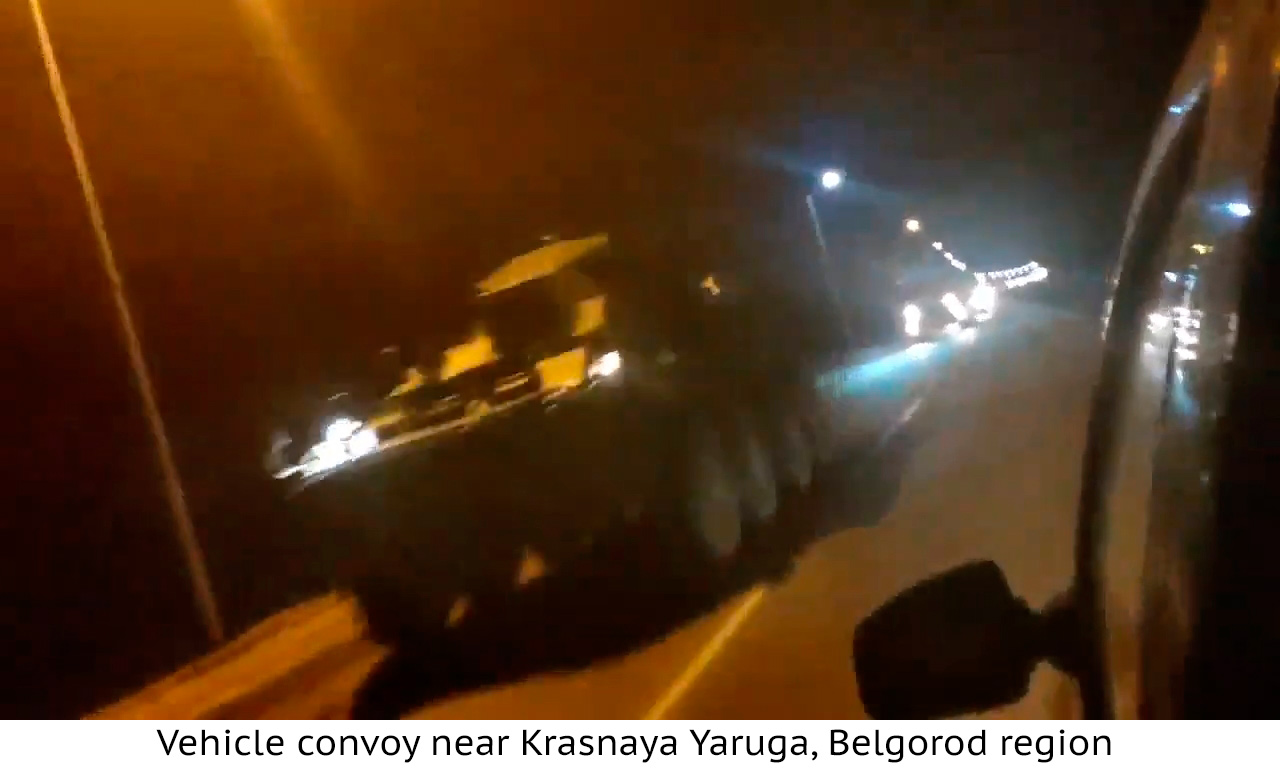
Finally, troops keep gathering near Valuyki, Belgorod region, one of the bases of the 3rd Motorized Rifle Division of the 20th Combined Arms Army. In case of a large-scale operation, this group may help encircle Kharkiv or attack the rear of the Ukrainian Joint Forces Operation in the Donbas together with other elements of the 3rd Division based around Boguchar, Voronezh region.
Rostov Axis
As of publishing time, we hadn't observed a massive transfer of additional units into Rostov region, but we did see a somewhat peculiar movement of the elements of the 150th Motorized Rifle Division (8th Guards Combined Arms Army, Southern Military District) based in the area. At least some elements of the division's 163rd Tank Regiment moved north by rail from their base in Persianovka to the area of Millerovo. Its is apparently also there that the regiment's motorized infantry went on their BTR-82A APCs (later they probably proceeded towards the Ukrainian-controlled part of Luhansk region north of the contact line).
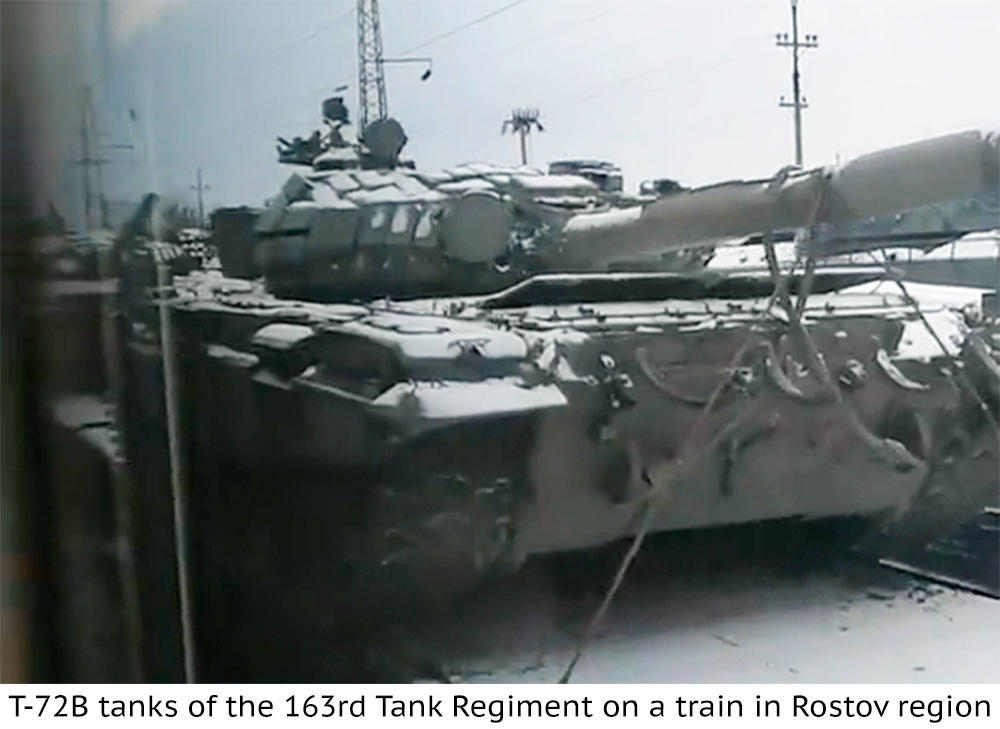

In case of a mass invasion, these forces could attempt to cut off some Ukrainian units on the contact line from the north. The transfer of some elements of the 150th division, which is based along the parts of the Ukrainian border controlled by Kremlin proxies, also suggests that the Russian military does not actually fear a Ukrainian offensive in the Donbas nor do they plan for repealing one, despite the rhetoric of Russian officials.
Crimea Axis and the Navy
In April last year we noted the arrival of the 58th Combined Arms Army units to Crimea from North Caucasus (where they took part in the 2008 war with Georgia). Then they were based at the Opuk training ground in southern Kerch peninsula. Late last year it became known that during the later drawdown, many vehicles of the army were stored near Novoozerne in the north-west of Crimea. During the past few months the number of vehicles in the camp grew, tents and a field hospital were set up.
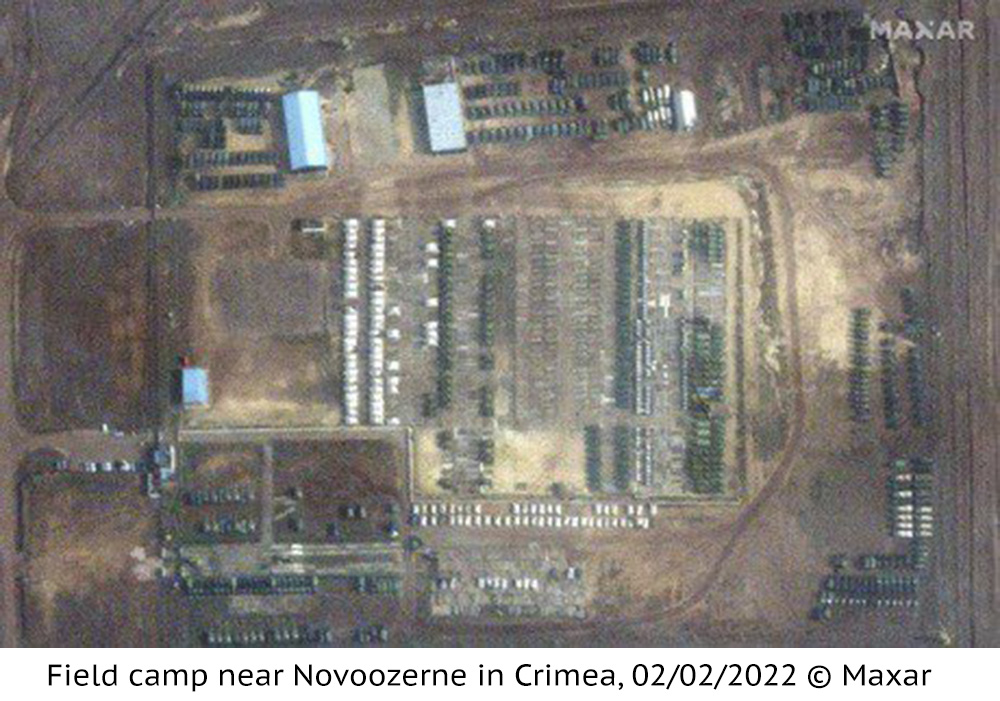
Apart from the 58th Army, elements of the 49th Army of the Southern Military District have also transferred to Crimea. One train carrying Msta-S self-propelled howitzers proceeded to Crimea from Timashevsk, Krasnodar region, the base of the 205th Separate Motorized Rifle Brigade, which is part of the 49th Army.
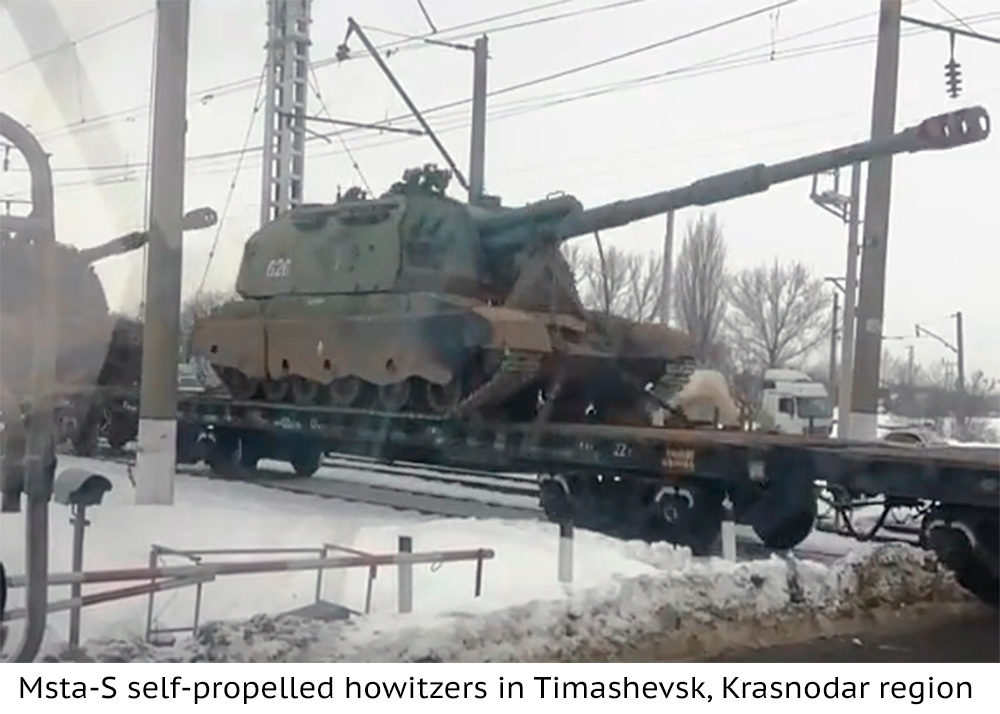
As of publication time, we haven't observed a mass concentration of forces deployed to Crimea in the north next to the "continental" part of Ukraine. Even so, this could be a potential axis of advance — however, at least part of the 58th and/or 49th army units could be used as the second wave of an amphibious landing. To set up the latter, the Russian navy group in the Black Sea currently has 11 large landing ships, 6 of which arrived from the Baltic and Northern fleets, as well as other landing craft transferred from the Caspian Flotilia. Apart from that, there are currently three cruiser strike groups in the Black and Mediterranean seas, centered around all 3 Slava-class missile cruisers of the Russian navy.
#Ukraine Crisis - Reinforcements are now in the BlackSea 21:00UTC:#ВМФ Project775 Ropucha class LSTMs (tank carrying), #Бф Baltic Fleet’s 71st Landing Ship Brigade’s Kaliningrad 102, Minsk 127 & Korolev 130 transited Bosphorus and entered the BlackSea. My pix via @reuterspictures pic.twitter.com/yHaQ14vfef
— Yörük Işık (@YorukIsik) February 8, 2022
In case of a massive operation, elements of the 810th Separate Naval Infantry Brigade of the Black Sea Fleet and possibly the 336th Separate Guards Naval Infantry Brigade of the Baltic Fleet could attempt an amphibious landing, for example, around Odesa on the Black sea or Mariupol on the Azov sea, as well as smaller-scale landings to support an offensive towards Kherson and the North Crimea Canal, which could solve the fresh water issue in the peninsula. One should also note that Ukraine has several domestic Neptune anti-ship missile systems, and a massive naval landing operation could require to neutralize them beforehand.
Aircraft and missiles
In addition to planes permanently based near Ukraine, Russia has transferred 12 Su-35 multi-role fighters and 32 Su-25SM ground attack aircraft, officially as part of the joint exercise. During the past few days we have also observed convoys with airfield vehicles in Belgorod and Bryansk regions. Should the need arise, additional aircraft could be rather quickly (in less than a day) transferred to airfields closer to the border.
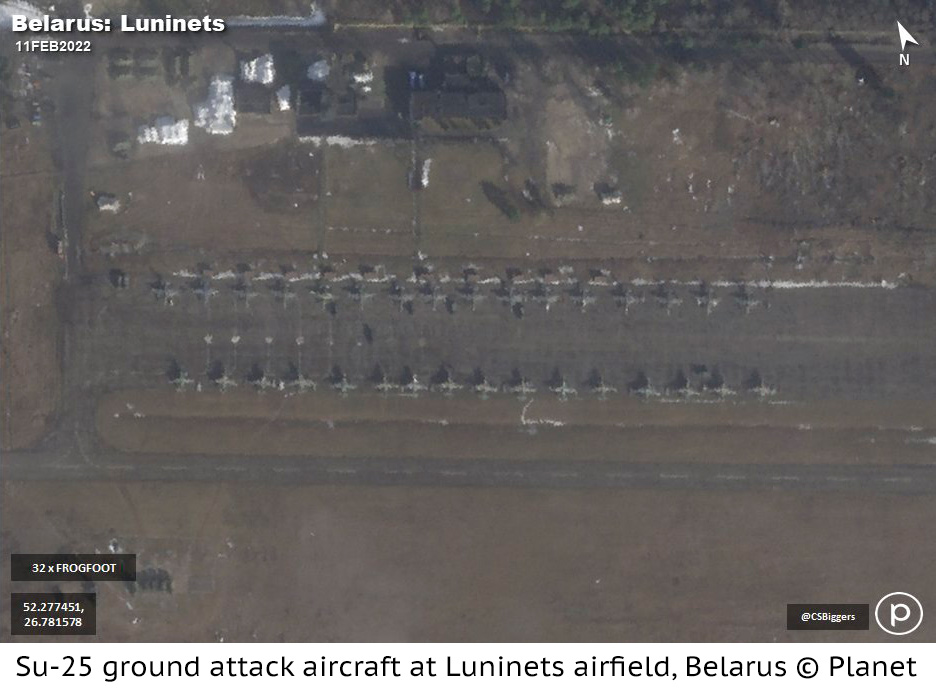
Apart from that, mass flights of helicopters were very recently observed in Russia and Belarus. While it is not possible to fully trace their routes, part of them ended up in Belgorod region in the same area where Russian helicopters were already observed in 2014, during the "hot phase" of the conflict in Eastern Ukraine. Other helicopters were reportedly transferred to the Machulischi airfield around Minsk.
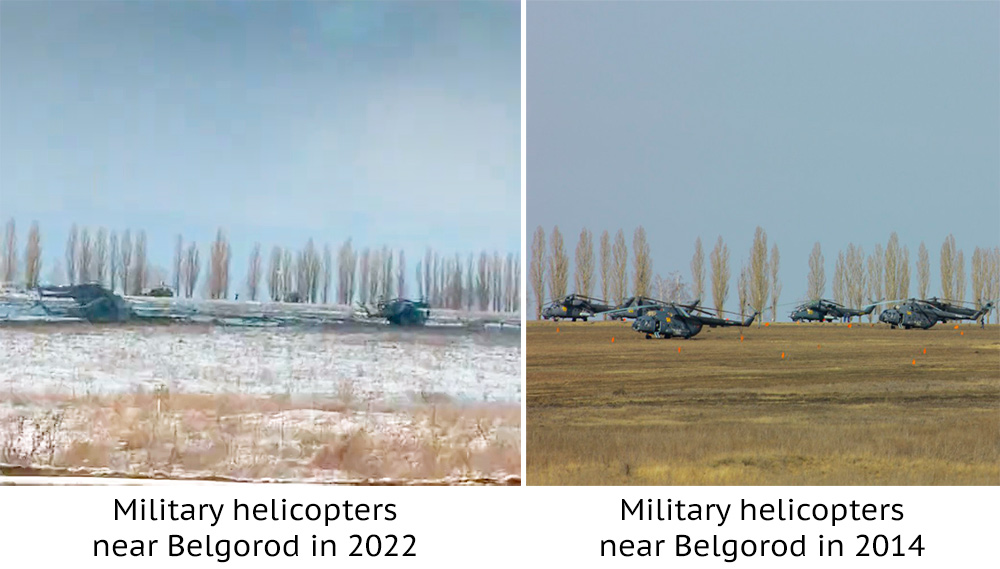
Apart from aircraft, recently more Iskander missile launchers and/or transloaders were observed near Ukraine, for example in Kursk and in Belgorod region. According to our and others' calculations, the armies transferred to the border brought up to a brigade's worth of Iskander launchers to add to the four brigades permanently based within their missiles' 500 km range from Ukraine. Thus, the Russian army can employ a total of 60 Iskander launchers in a mass operation.
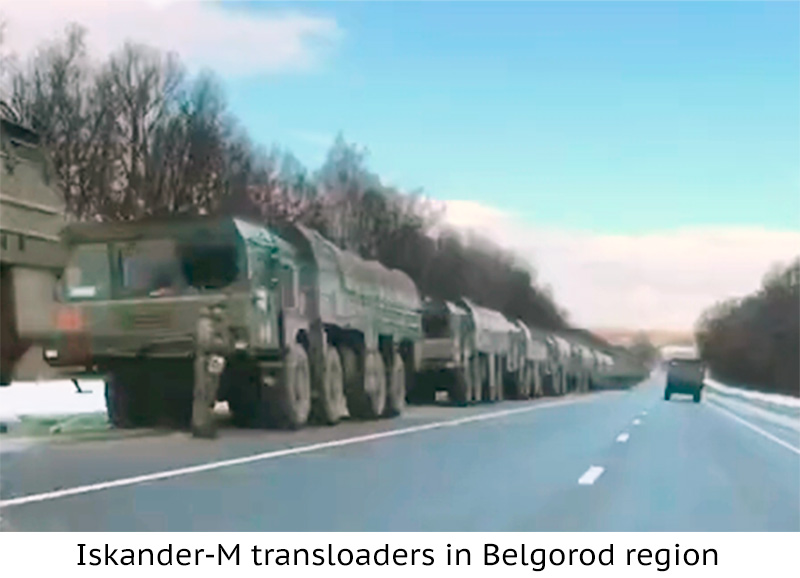
The air and missile superiority is perhaps Russia's most serious advantage in a large-scale war with Ukraine. The Ukrainian air force and air defense forces field Soviet legacy hardware, which, as seen in the 2nd Karabakh war, is quite ineffective against the enemy's modern electronic warfare capabilities and precision-guided munitions. The recent NATO supplies to Ukraine include only low-altitude man-portable anti-air missile launchers. Ukraine also fields Soviet Tochka-U ballistic missiles and a certain amount of domestic Hrim missile systems (currently undergoing trials), but the Russian high command may expect to destroy them from the air at the start of the operation or intercept their missiles with designated S-300V anti-missile systems.
National Guard and "Kadyrovites"
In early February we wrote about a transfer of the National Guard troops and also forces loyal to Chechen leader Ramzan Kadyrov (which are on paper also part of the National Guard) towards the Ukrainian border. Since then we have seen BTR-80 APCs with camo patterns characteristic of the National Guard, armored Ural trucks and "avtozak" detainee transport vehicles (familiar to many from the footage of protests in Russia) in nearly every region bordering Ukraine. According to an eyewitness report shared with us, in the evening of February 12 the National Guard also went to Belarus.
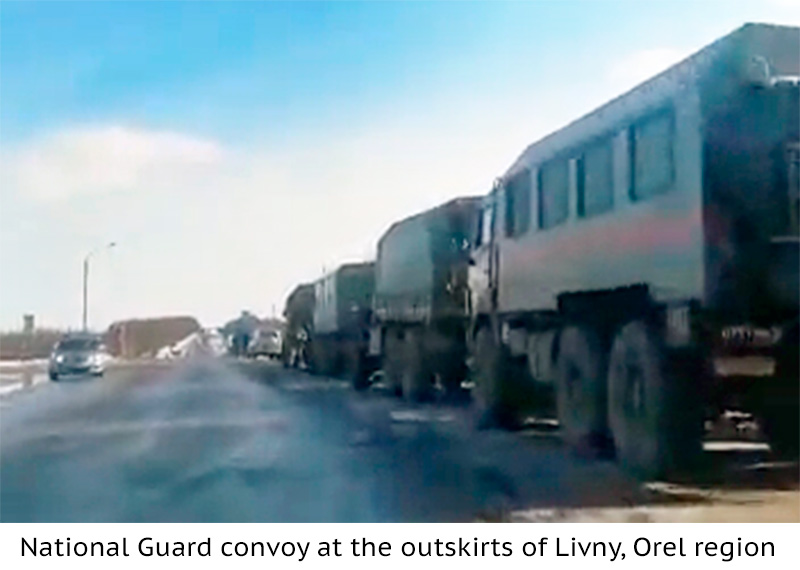
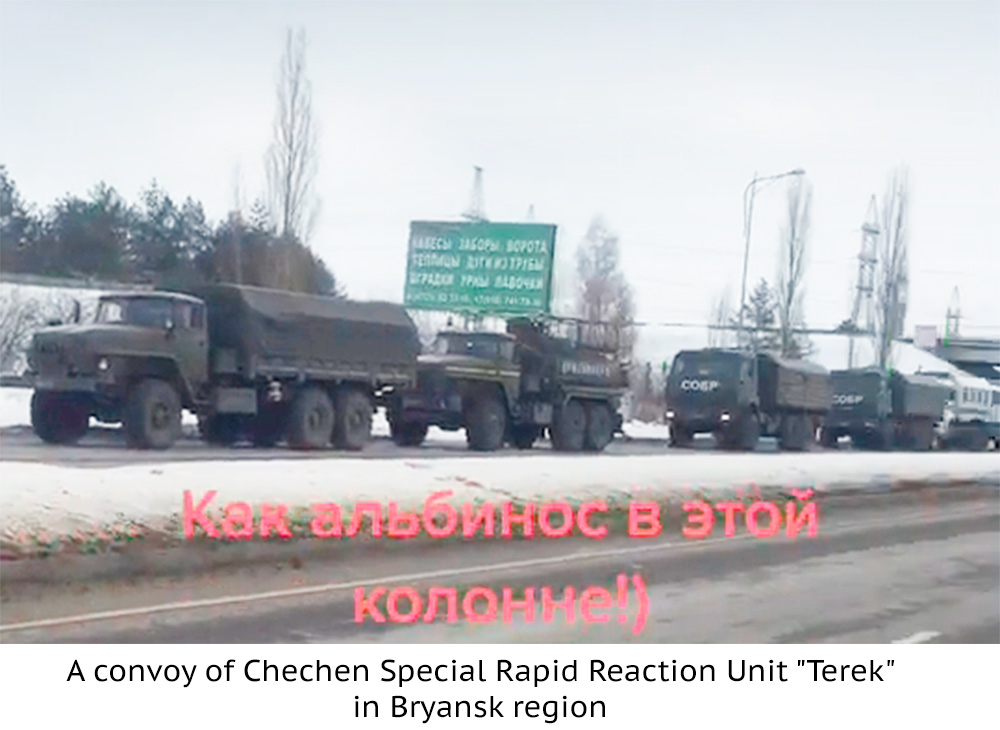
Such a massive presence of National Guard troops near the border lends more credence to hypotheses that include a large-scale offensive to seize and hold large parts of Ukraine for at least some time. In this case, the National Guard (also known as "Rosgvardia" for its umbrella organization) can perform police and counterinsurgency tasks. The presence of the "kadyrovtsy" ("kadyrovites") is of particular concern, as they are de facto unaccountable to the Federal National Guard command, and thus there will be even less control over their actions in potential occupied territories.
Conclusion
All of the above shows a picture of an unprecedented land, air and naval buildup, that also includes other militarized security forces. If, as many believe, all these actions are a bluff, then it is a particularly good (and quite expensive) bluff since it is indistinguishable from preparations to a real large-scale offensive.
In any case, regardless if the operation will be ordered, it will be fully prepared in the next few days. We could still see transfers of Airborne or National Guard troops to the staging grounds, as well as additional aircraft. However, it wouldn't be an exaggeration to say that by February 16, the much-hyped date of the operation commencement, all preparations may well be completed.
We will continue monitoring the situation closely and kindly ask to send any evidence you may have via e-mail ([email protected]) or to @leviev via Telegram.
